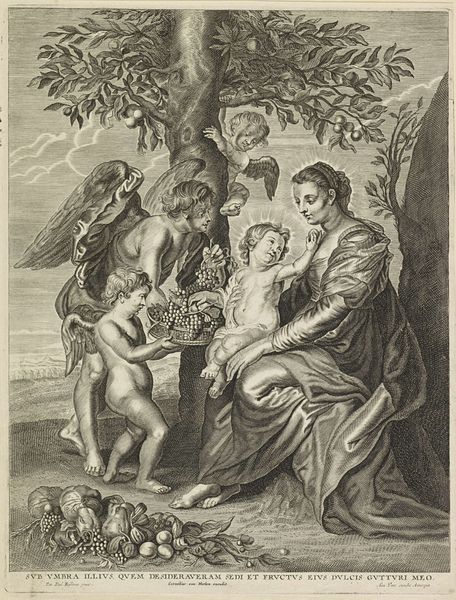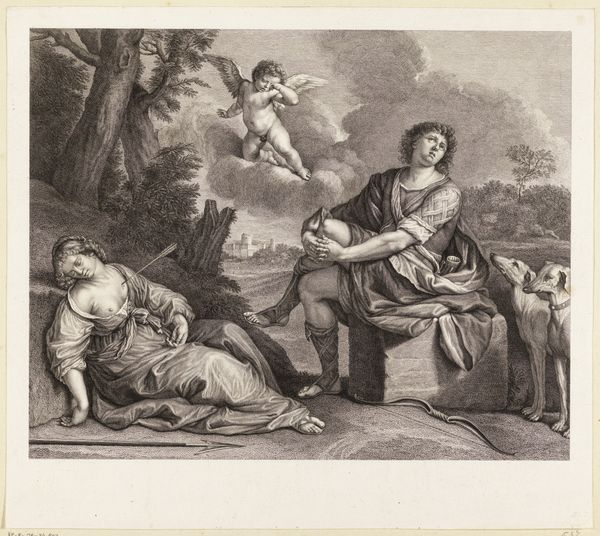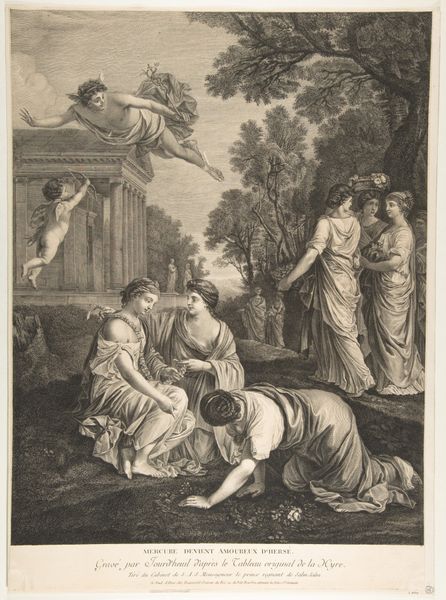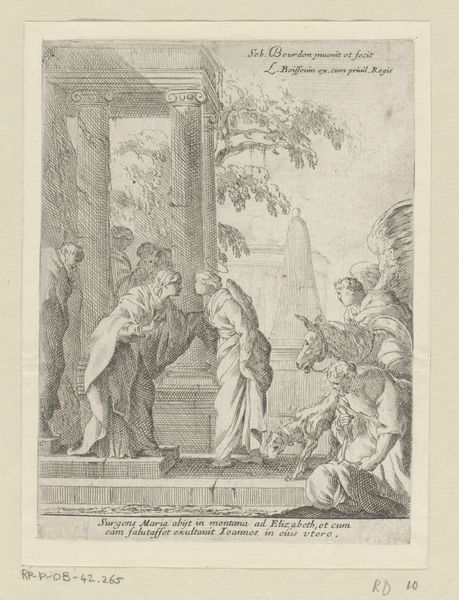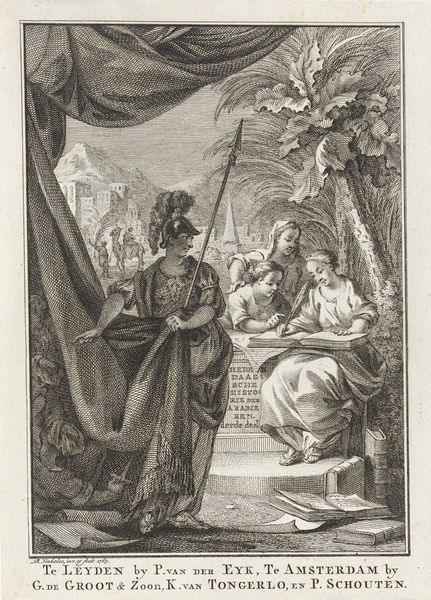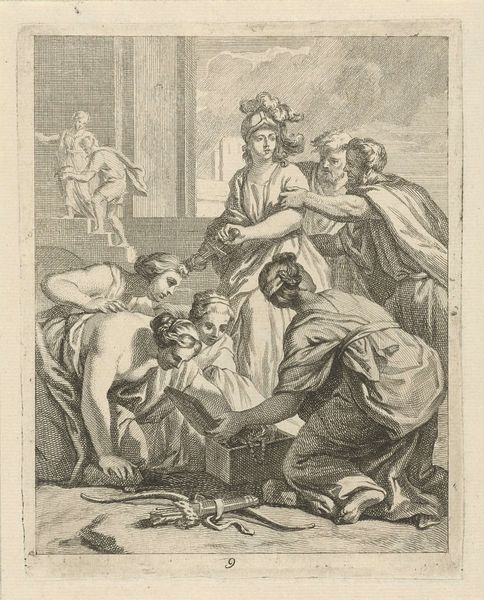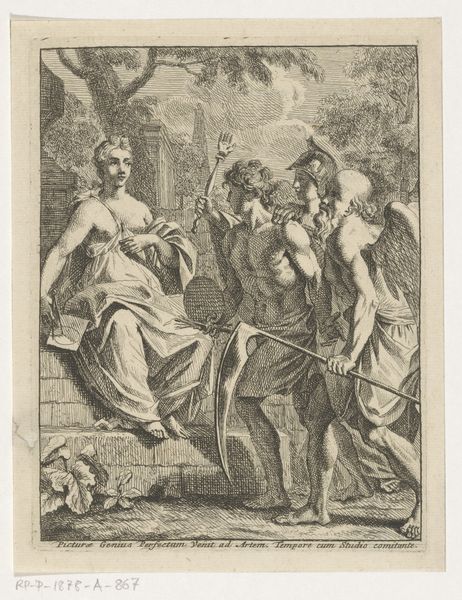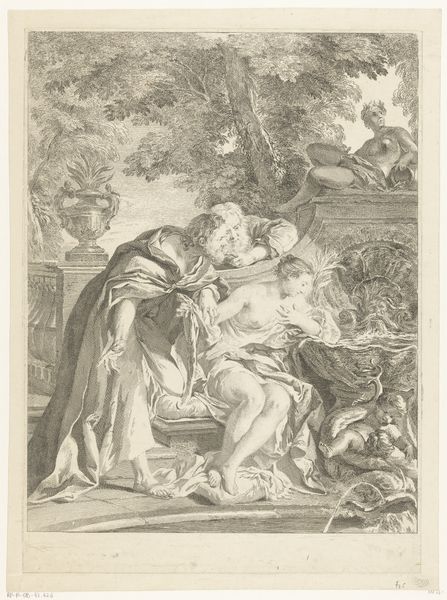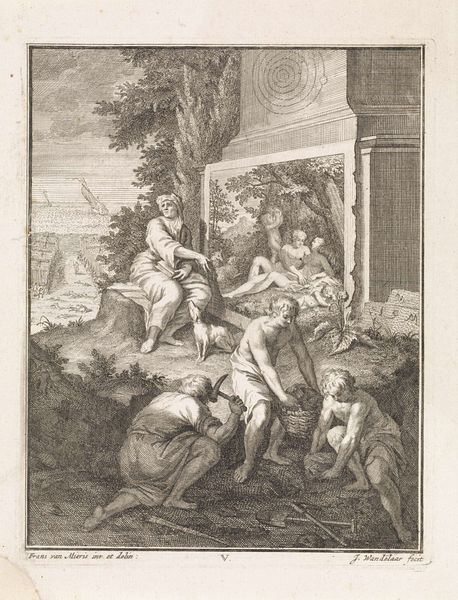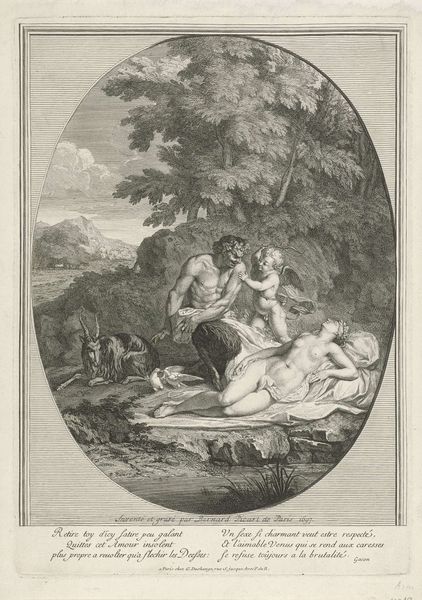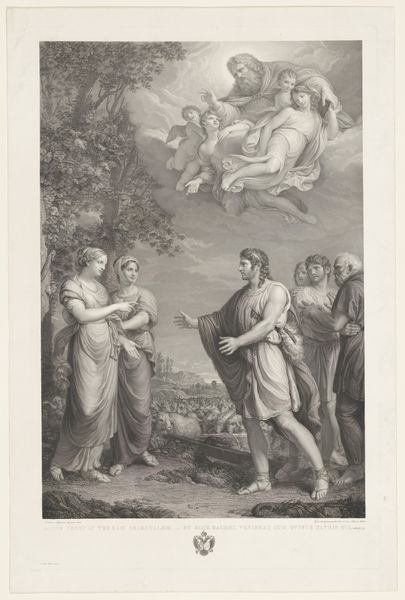
Dimensions: height 572 mm, width 419 mm
Copyright: Rijks Museum: Open Domain
Curator: Here we have "Abraham verdrijft Hagar en Ismaël," or "Abraham Casting Out Hagar and Ishmael." This print, rendered sometime between 1751 and 1816, is attributed to Carlo Antonio Porporati and can be found right here at the Rijksmuseum. It employs engraving techniques, falling into both the Baroque and landscape styles. What's your initial read on this one? Editor: Whew, the drama! It feels heavy, right? All that monochrome intensity, the sorrow practically radiates off the figures. And the dog! Even the dog looks bummed. It's a real expulsion scene. I'm almost surprised it is not in colour, with so much suffering and rage so clearly displayed in such simple monochrome. Curator: The depiction of Abraham's act of casting out Hagar and their son Ishmael really crystallizes societal anxieties about race, gender, and power. Note the architecture versus nature – a sort of ordered, almost performative expulsion occurring at the edge of the wild. Who has access to safety and belonging is visually and spatially enforced. Editor: Right! It is totally staged in some way! Abraham’s pose, the almost theatrical gesture outward… Is that supposed to absolve him of guilt, or what? And Hagar, head in hand, posture all resignation. Even Ishmael clinging to her feels so incredibly helpless! It's awful but the artist captures the emotions well. And by the way what is that other boy looking up to at the entrance of the construction behind Abraham's back. Is that his representation of jealousy towards Ishmael, a detail that completes Abraham's controversial situation even further? Curator: Considering its date of creation, we should acknowledge how this work participated in discourses about lineage and legitimacy. Abraham's internal conflict highlights prevailing ideas about divine promise and the patriarchy at the time. I'm wondering to what extent it should also question this kind of problematic interpretation of scriptures today? Editor: Agreed. This image definitely throws those uncomfortable bits about religious dogma into stark relief, especially concerning female agency and the repercussions of patriarchal decisions. It forces you to question the assumed virtue in these narratives, even generations later. And frankly, all this family drama kind of makes you feel for all the figures, regardless of their context or supposed motivations. Curator: Indeed, a testament to the ability of art to provoke questions that linger across centuries, urging us to examine the ethics embedded in our inherited narratives. Editor: Absolutely, I'm certainly leaving here pondering a new perspective on what "divine" means in a time where patriarchal virtues feel far from divine.
Comments
No comments
Be the first to comment and join the conversation on the ultimate creative platform.

